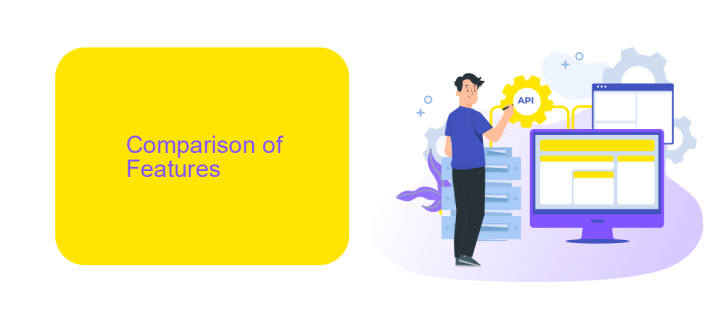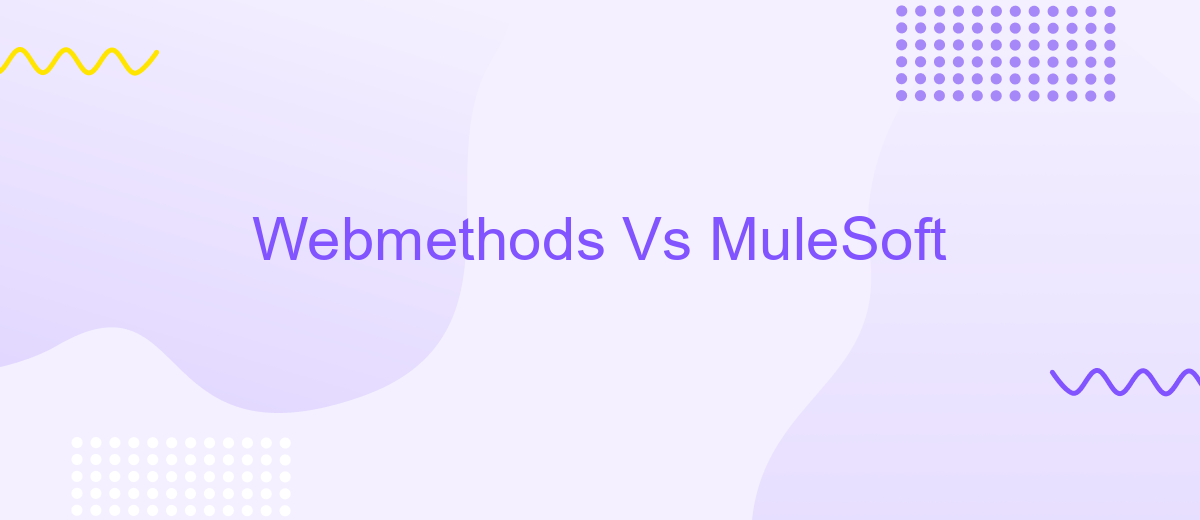Webmethods Vs MuleSoft
In the ever-evolving landscape of enterprise integration, choosing the right platform is crucial for seamless connectivity and operational efficiency. This article delves into a comparative analysis of two leading integration solutions: Webmethods and MuleSoft. By examining their features, capabilities, and performance, we aim to provide valuable insights to help businesses make an informed decision tailored to their specific needs.
Introduction
In today's fast-paced digital landscape, businesses are increasingly relying on integration platforms to streamline their operations and enhance connectivity between various applications. Two of the most popular integration platforms are Webmethods and MuleSoft, each offering unique features and capabilities to address diverse business needs.
- Webmethods: Known for its robust integration capabilities, Webmethods provides comprehensive tools for application integration, API management, and B2B solutions.
- MuleSoft: Renowned for its flexibility and scalability, MuleSoft offers a unified platform for API-led connectivity, allowing businesses to build an application network through APIs.
Choosing the right integration platform can significantly impact a company's efficiency and agility. While Webmethods and MuleSoft are both powerful tools, understanding their distinct advantages and how they align with your business goals is crucial. Additionally, platforms like ApiX-Drive can further enhance integration processes by offering seamless connectivity and automation solutions, making it easier to manage and synchronize data across multiple systems.
Comparison of Features

Webmethods and MuleSoft are both powerful integration platforms, but they offer distinct features that cater to different needs. Webmethods excels in its robust Business Process Management (BPM) capabilities, enabling seamless automation of complex workflows. It also provides extensive support for B2B integrations and EDI transactions, making it a preferred choice for enterprises with intricate supply chain requirements. On the other hand, MuleSoft shines with its API-led connectivity approach, allowing for easy creation, management, and reuse of APIs. This makes MuleSoft particularly strong in environments where microservices architectures and API integrations are critical.
Both platforms offer cloud and on-premises deployment options, but MuleSoft's Anypoint Platform provides a more user-friendly interface for designing and managing integrations. Additionally, MuleSoft's extensive library of pre-built connectors simplifies the integration process, reducing development time. For those looking for an even more streamlined integration setup, services like ApiX-Drive can further enhance the efficiency of connecting various applications by providing ready-made solutions for popular software. While Webmethods also offers a range of connectors, its steep learning curve can be a drawback for smaller teams or organizations with limited resources.
Use Cases and Industry Adoption

Webmethods and MuleSoft are prominent integration platforms widely adopted across various industries. They both offer robust solutions for connecting disparate systems, enabling seamless data flow and process automation. Webmethods is often favored in large enterprises due to its comprehensive B2B integration capabilities and extensive support for legacy systems. MuleSoft, on the other hand, is known for its API-led connectivity approach, making it a popular choice for organizations looking to build scalable and flexible integrations.
- Financial Services: Both platforms are used to integrate banking systems, streamline payment processes, and enhance customer experiences.
- Healthcare: They facilitate the integration of electronic health records (EHR), ensuring secure and efficient data exchange between healthcare providers.
- Retail: These tools help in synchronizing inventory management, order processing, and customer relationship management (CRM) systems.
- Manufacturing: They enable the integration of supply chain management (SCM) and enterprise resource planning (ERP) systems for better operational efficiency.
- Technology: Companies leverage these platforms to integrate various SaaS applications and on-premise systems, enhancing overall IT infrastructure.
In addition to these platforms, services like ApiX-Drive are gaining traction for their user-friendly interface and ability to automate integrations without extensive coding. This makes it easier for businesses of all sizes to connect their applications and streamline workflows. Whether you're a large enterprise or a growing startup, choosing the right integration platform is crucial for achieving operational efficiency and business agility.
Pricing and Licensing

When comparing WebMethods and MuleSoft, pricing and licensing are crucial factors to consider. Both platforms offer robust integration solutions, but their cost structures differ significantly, impacting the overall budget for businesses.
WebMethods follows a subscription-based pricing model, where costs can vary based on the number of users, data volume, and specific features required. MuleSoft, on the other hand, offers a more modular approach with its subscription plans, allowing businesses to pay for only what they need. This flexibility can be advantageous for organizations with varying integration requirements.
- WebMethods: Subscription-based pricing, tailored to user count and data volume.
- MuleSoft: Modular subscription plans, pay-as-you-go for specific features.
- Both platforms offer enterprise-level solutions with scalable options.
- Additional costs may arise for advanced support and custom integrations.
For businesses looking to streamline their integration processes without hefty initial investments, considering third-party services like ApiX-Drive can be beneficial. ApiX-Drive offers a cost-effective solution for setting up and managing integrations, making it a valuable addition to either WebMethods or MuleSoft ecosystems.
Conclusion
In conclusion, both Webmethods and MuleSoft offer robust solutions for integration needs, each with its unique strengths. Webmethods stands out with its comprehensive suite of tools designed for complex enterprise environments, providing extensive support for various protocols and standards. On the other hand, MuleSoft excels with its Anypoint Platform, which is highly scalable and user-friendly, making it a preferred choice for organizations looking for flexibility and ease of use in their integration processes.
Choosing between Webmethods and MuleSoft ultimately depends on the specific requirements of your organization. For those needing a highly customizable and enterprise-grade solution, Webmethods is a solid choice. Conversely, for businesses that prioritize quick deployment and ease of integration, MuleSoft is an excellent option. Additionally, services like ApiX-Drive can further simplify the integration process by offering automated workflows and seamless connectivity between different applications, enhancing the capabilities of both Webmethods and MuleSoft.


FAQ
What are the main differences between Webmethods and MuleSoft?
Which platform is more suitable for cloud-based integrations?
How do Webmethods and MuleSoft handle API management?
What are the cost implications of using Webmethods vs MuleSoft?
Can I automate integrations without extensive coding knowledge?
Apix-Drive is a universal tool that will quickly streamline any workflow, freeing you from routine and possible financial losses. Try ApiX-Drive in action and see how useful it is for you personally. In the meantime, when you are setting up connections between systems, think about where you are investing your free time, because now you will have much more of it.

